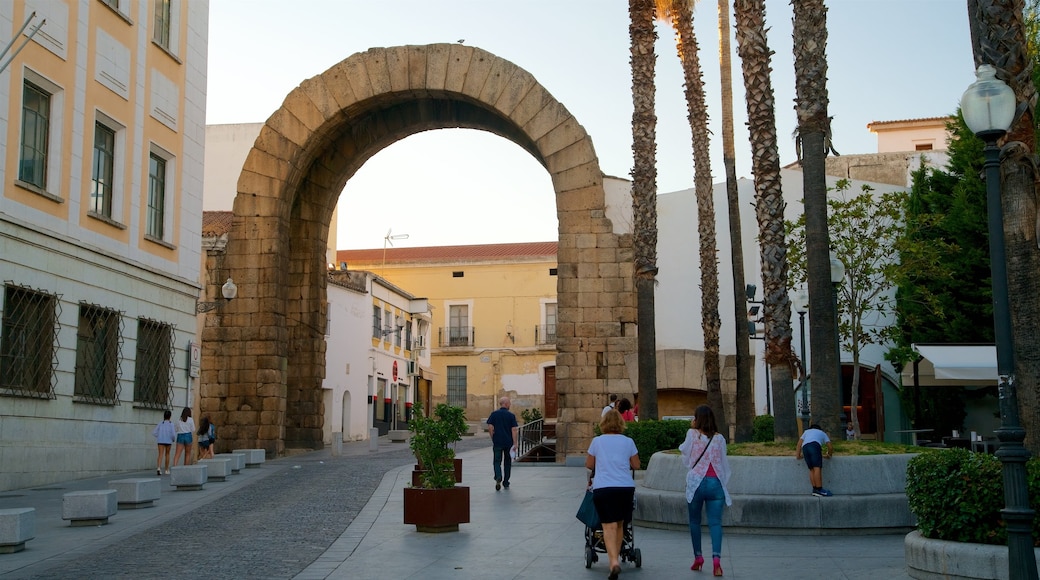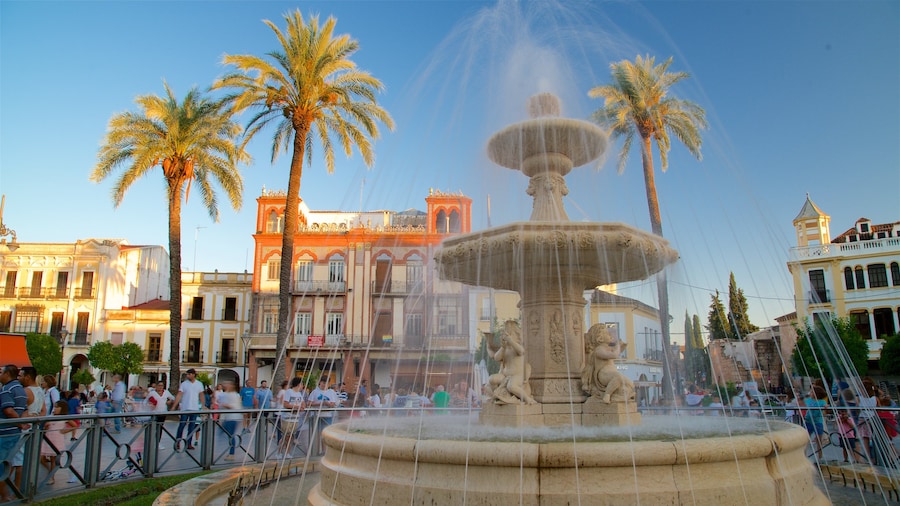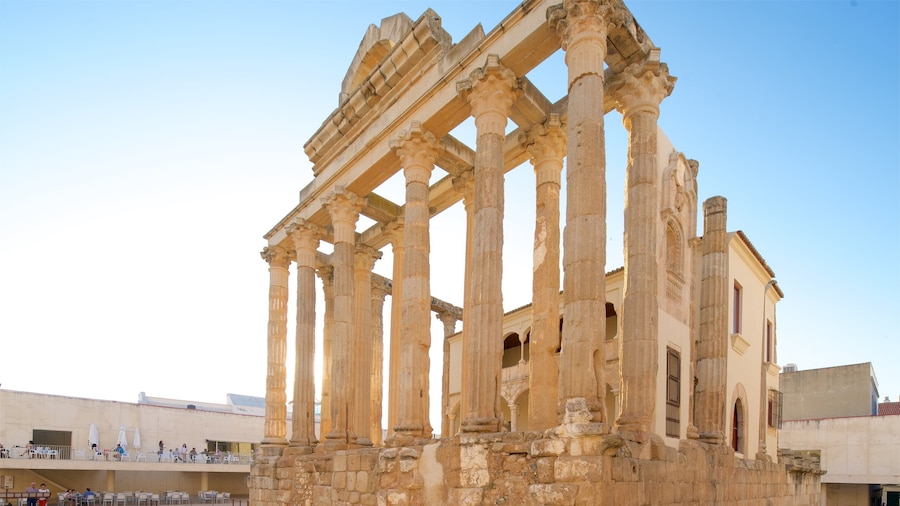Contemplate the design and structure of this 1st-century Roman arch that once served as a gateway to an important temple.
During Roman times, people would have walked under the Arco de Trajano to access a colossal temple of the imperial cult, the religion that regarded emperors and some of their relatives as gods. The doorway was one of three gateways to the sacred temple, the remains of which are along Holguin Street. It was the central and biggest arch. See the tall structure that has survived to the present day.
The granite arch is located where the cardo maximus ended. This major road crossed the city from the north to the south. As you pass through the arch, look around for a few of the road's original flagstones, still visible in the roadway.
The gateway was built during the time of Emperor Tiberius in the first half of the 1st century and is remarkably well preserved. Pause for a few minutes next to the 49-foot-tall (15-meter) arch to study its ancient form.
In the original structure the arch would have supported a block-like monument with two side doors and covered with inscribed marble slabs. The doors and any inscriptions that adorned the structure have been lost over time. Just the blocks remain. Note the holes in some of these blocks that are thought to have been anchoring holes for the marble slabs. Read the information panels near the side of the arch, which cover some of its history and construction. They are written in Spanish and English. Walk under the arch on your way to explore other parts of the city.
The Arco de Trajano is located on Calle Trajano in the old city center. Arrive on foot or by public transportation or drive and pay to park in one of the garages nearby. While you are here, see other points of interest in the area. These include the Temple of Diana, the Plaza de España and the Visigoth Collection, which is housed inside the 17th-century Church of Santa Clara.


















